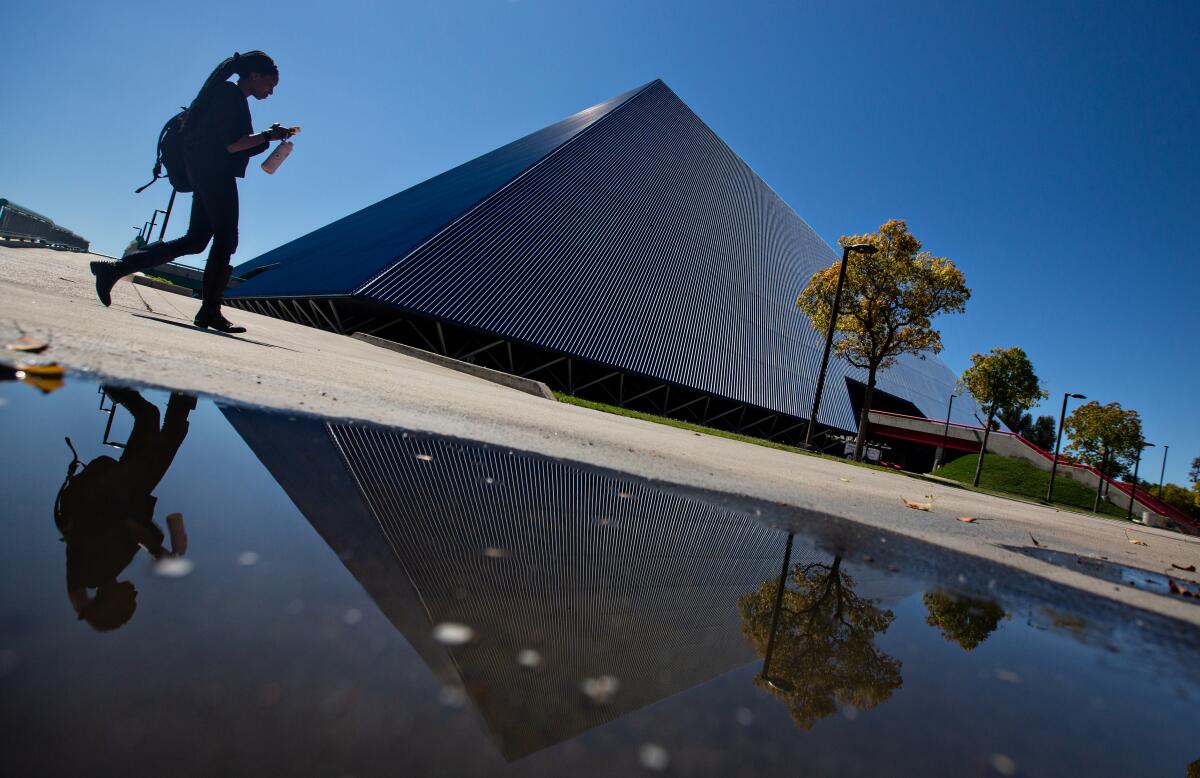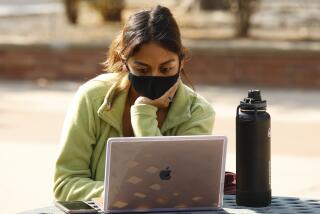CSU leaders urged to take aggressive action to limit spread of COVID-19 amid surge

Presidents of the 23 campuses of the California State University system are being urged to delay the resumption of any face-to-face instruction— even for classes that have only a limited in-person component — and reassess plans for the end of fall term and beginning of spring term amid the dramatic increase in COVID-19 cases in California.
“The pandemic’s progression, coupled with the reality that many of our students and employees will be traveling and/or socializing with others over the next several weeks ... creates an immediate urgency to review — and likely adjust — campus plans,” CSU Chancellor Timothy P. White and Chancellor-select Joseph I. Castro, who will assume office Jan. 4, wrote in a letter to campus presidents this week.
The two leaders urged campuses to delay any in-person instruction to as late as possible in January or even February, with appropriate testing, quarantining and tracing protocols in place, to mitigate the potential for virus transmission.
Education across the CSU is already primarily virtual, with only 7% of classes systemwide offering in-person instruction. White announced earlier this fall that mostly online classes would continue through the spring term, which at many campuses won’t begin until the third or fourth week of January.
The letter asked each president to reconvene campus teams and consult with local public health departments.
“The goal is to review your campus’ practices to further mitigate the human-to-human (faculty, staff and students) interaction for the duration of this current surge,” estimated to last about eight weeks through the end of January, the letter said.
In addition to teaching, the leaders cited research, creative activities, cultural activities, athletics and the repopulation of residence halls as areas to consider in their planning.
They noted that individuals who engage in “higher-risk behavior,” such as traveling to areas with high rates of infection or participating in social gatherings in contravention of public health mandates, will pose a particular challenge, and that as people return to residence halls, they should be tested and quarantined appropriately.
Despite the closure of many campus buildings and facilities and the shift to primarily online instruction and services, several universities within and outside of the CSU system experienced COVID-19 outbreaks among students shortly after the start of the fall semester, forcing schools to walk back their limited reopening.
In their letter, White and Castro said the current surge will probably make previous experiences with the pandemic “seem diminutive in comparison” and that their decisions are based on two overarching priorities: protecting the health and safety of students, staff and faculty while enabling as many students as possible to continue making progress toward their degrees.
“There are no perfect solutions,” the two leaders wrote. “Our challenge is to mitigate and decrease the spread of the virus as we await broad vaccine availability currently projected for spring or early summer 2021.”
More to Read
Start your day right
Sign up for Essential California for news, features and recommendations from the L.A. Times and beyond in your inbox six days a week.
You may occasionally receive promotional content from the Los Angeles Times.







